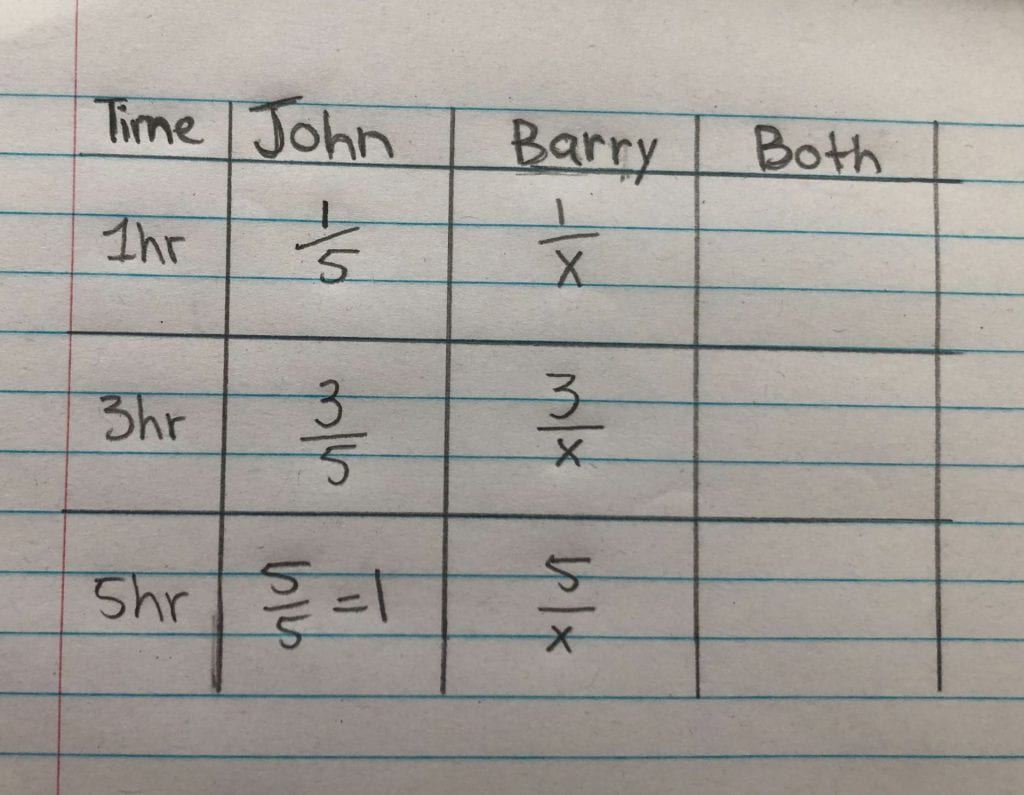In precalc 11 this week, we learned about trigonometry, and more specifically, special triangles in which you don’t need a calculator. There are two types of triangles we learned to memorize, which look like this:

As you can see, these triangles involve the angles 45°, 30°, and 60°. They also have the three primary trigonometric ratios: sine, cosine, and tangent. For the second triangle, the ratios can be based off both the 30° or 60°. Here are the ratios:

Below are some questions where the angle is given, and you need to find the ratio (or fraction) for either sine, cosine, or tangent. You can start by drawing a diagram of the four quadrants, labelling each with sine, cosine, tangent, or all. This tells you in what quadrant each of the ratios will be positive. Then figure out where the angle is from the question, and use it to draw the triangle. By doing this, you can find the reference angle, and therefore choose which of the special triangles to use.
Next, refer back to the original ratios stated above, and find the one to fit the reference angle. If the sign (positive or negative) of the angle is in a quadrant that matches the sign, keep it positive. If not, change the answer to negative.


Remember, these questions can all be done without a calculator if you remember the two special triangles. As long as either 45°, 30°, or 60°, is present, they are easy to solve.
In precalc 11 this week, we continued learning about rational equations, and how to apply them into real life word problems. Most word problems can be solve creating a rational equation and solving it. This blog post will explain one type of word problem I learned, which involves work and time. Here is an example:
It takes John 5 hours to clean his basement. When John and his friend Barry clean it together, it only takes 3 hours. How long would it take Barry to clean the basement by himself?
To solve this, you can create a table with John, Barry and Both as the categories on top. On the left side, write the time. Choose values of time that represent the information given in the question. Because it takes John 5 hours alone and 3 hours together, I chose to use 1 hour, 3 hours, and 5 hours. Just make sure the value of time for which they can finish the job together is one of the options (in this case, 3).

Next, add in the values you know. It takes John 5 hours to finish the job, so in 1 hour John will have cleaned 1/5 of the basement. In 3 hours, he will have done 3/5 of the job. In 5 hours, he will have finished 5/5 (which equals 1), which means all of the basement.

Because we don’t know the values for Barry, write similar fractions in the table, but use a variable. In one hour, he will have done 1/x of the work. Repeat this for 3 and 5 hours.

Finally, complete the section with both people working as a team. Add the values from each row, as shown below. In the section with 3 hours, we know they finished the job. Therefore, the two values added together equal one.

Now, just solve the equation you created:

This means that it would take Barry 7.5 hours to clean the basement on his own.
This is a different example using the same strategy:
Mary takes three times as long as her daughter to set up their Christmas decorations. When they do it together, it takes 9 hours to finish the job. How long would it take each person on their own to set up the decorations?


In math 11 this week, we learned about adding rational expressions. This is different than multiplying expressions, because you usually cannot cancel out numbers. To find out what the variable is for this kind of expression, you can usually find a common denominator, to multiply with each fraction. If you multiply the numerator and denominator, the denominator will become the same, so the numerators can be added. However, this is the same as multiplying by 1, so it does not change the ratio of the equation. Here are a few rational expressions using addition, and the steps on how to solve them:

Remember, always include restrictions, or non-permissible values with the answers. Here is one more example. Don’t forget to distribute the negative into all terms after it (in the numerator only):













